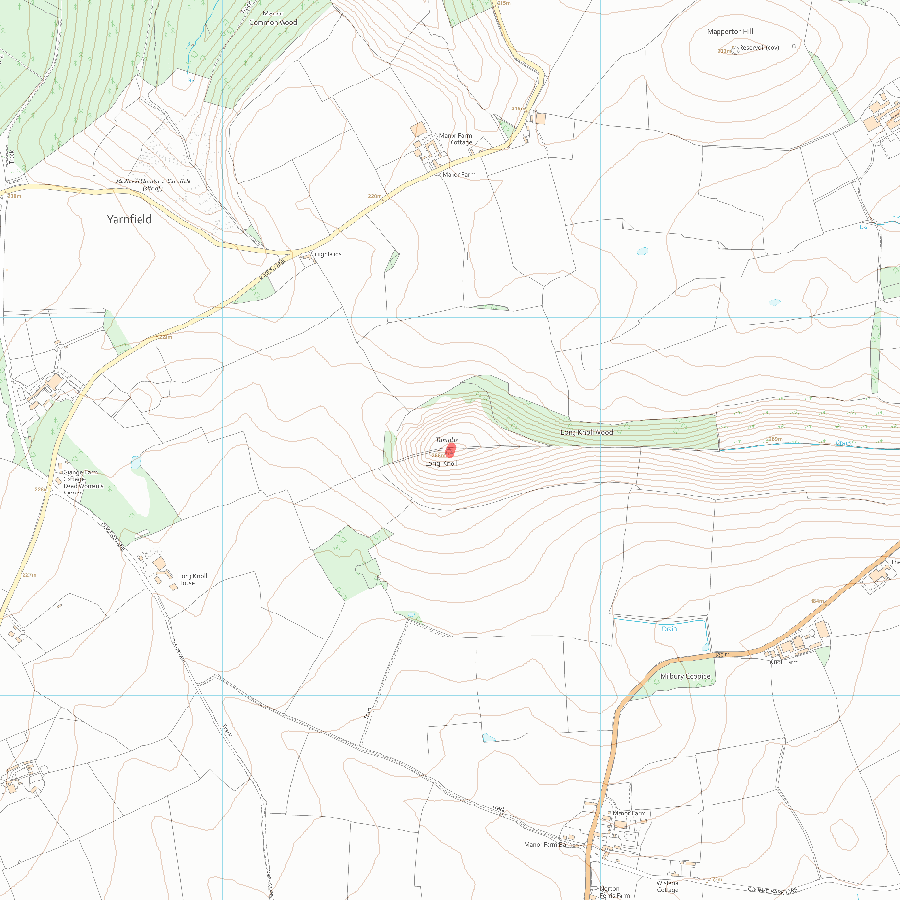List Entry Summary
This monument is scheduled under the Ancient Monuments and Archaeological Areas Act 1979 as amended as it appears to the Secretary of State to be of national importance. This entry is a copy, the original is held by the Department for Culture, Media and Sport.
Name: Two bowl barrows and later earthwork features on Long Knoll, 760m south of Manor Farm
List Entry Number: 1017702
Location
The monument may lie within the boundary of more than one authority.
County:
District: Wiltshire
District Type: Unitary Authority
Parish: Kilmington
County:
District: Wiltshire
District Type: Unitary Authority
Parish: Maiden Bradley with Yarnfield
National Park: Not applicable to this List entry.
Grade: Not applicable to this List entry.
Date first scheduled: 08-Aug-1957
Date of most recent amendment: 29-Apr-1998
Legacy System Information
The contents of this record have been generated from a legacy data system.
Legacy System: RSM
UID: 26828
Asset Groupings
This List entry does not comprise part of an Asset Grouping. Asset Groupings are not part of the official record but are added later for information.
List Entry Description
Summary of Monument
Legacy Record - This information may be included in the List Entry Details.
Reasons for Designation
Bowl barrows, the most numerous form of round barrow, are funerary monuments
dating from the Late Neolithic period to the Late Bronze Age, with most
examples belonging to the period 2400-1500 BC. They were constructed as
earthen or rubble mounds, sometimes ditched, which covered single or multiple
burials. They occur either in isolation or grouped as cemeteries and often
acted as a focus for burials in later periods. Often superficially similar,
although differing widely in size, they exhibit regional variations in form
and a diversity of burial practices. There are over 10,000 surviving bowl
barrows recorded nationally (many more have already been destroyed), occurring
across most of lowland Britain. Often occupying prominent locations, they are
a major historic element in the modern landscape and their considerable
variation of form and longevity as a monument type provide important
information on the diversity of beliefs and social organisations amongst early
prehistoric communities. They are particularly representative of their period
and a substantial proportion of surviving examples are considered worthy of
protection.
The bowl barrows on Long Knoll, 760m south of Manor Farm, are comparatively
well preserved examples of their class and will contain archaeological
deposits providing information about Bronze Age beliefs, economy and
environment. The parish boundary earthwork demonstrates the use of the earlier
barrow mounds as prominent sighting points within the landscape and may
reflect a long established boundary.
History
Legacy Record - This information may be included in the List Entry Details.
Details
The monument includes two bowl barrows, aligned north-south, one later
encircled by a possible tree planting earthwork, together with a section of
parish boundary bank and ditch. The monument lies on the highest point of the
narrow ridge known as Long Knoll, 760m south of Manor Farm.
The surviving earthworks suggest that there were originally two small bowl
barrows, the northern example approximately 12m in diameter, the southern
approximately 10m. The mounds of both will be surrounded by quarry ditches,
from which material for their construction would have been quarried. These
have become infilled but will survive as buried features about 2m wide. The
parish boundary bank and ditch which runs in an east-west direction along the
spine of the ridge has truncated the southern side of the northern barrow.
Subsequent to this both barrow mounds appear to have been partly excavated as
both exhibit disturbance to the central part of their mounds. This may be the
result of investigations carried out by Sir Richard Colt Hoare in the early
19th century when one barrow was recorded as having `once contained a
skeleton'. Pottery and coins suggesting Roman activity in the vicinity were
also recovered. The southern barrow mound appears, at a later date, to have
been encircled by a comparatively slight ditch and bank, each approximately
1m wide. These may represent the earthworks of a formal tree planting.
A triangulation pillar is positioned on the northern side of the southern
barrow mound.
All fence posts and the triangulation pillar are excluded from the scheduling
although the ground beneath these features is included.
MAP EXTRACT
The site of the monument is shown on the attached map extract.
It includes a 2 metre boundary around the archaeological features,
considered to be essential for the monument's support and preservation.
Selected Sources
Books and journalsColt Hoare, R, The Ancient History of Wiltshire: Volume I, (1812), 42
Map
National Grid Reference: ST 78600 37650
The below map is for quick reference purposes only and may not be to scale. For a copy of the full scale map, please see the attached PDF - 1017702.pdf - Please be aware that it may take a few minutes for the download to complete.

© Crown Copyright and database right 2018. All rights reserved. Ordnance Survey Licence number 100024900.
© British Crown and SeaZone Solutions Limited 2018. All rights reserved. Licence number 102006.006.
This copy shows the entry on 26-Apr-2024 at 08:42:51.


